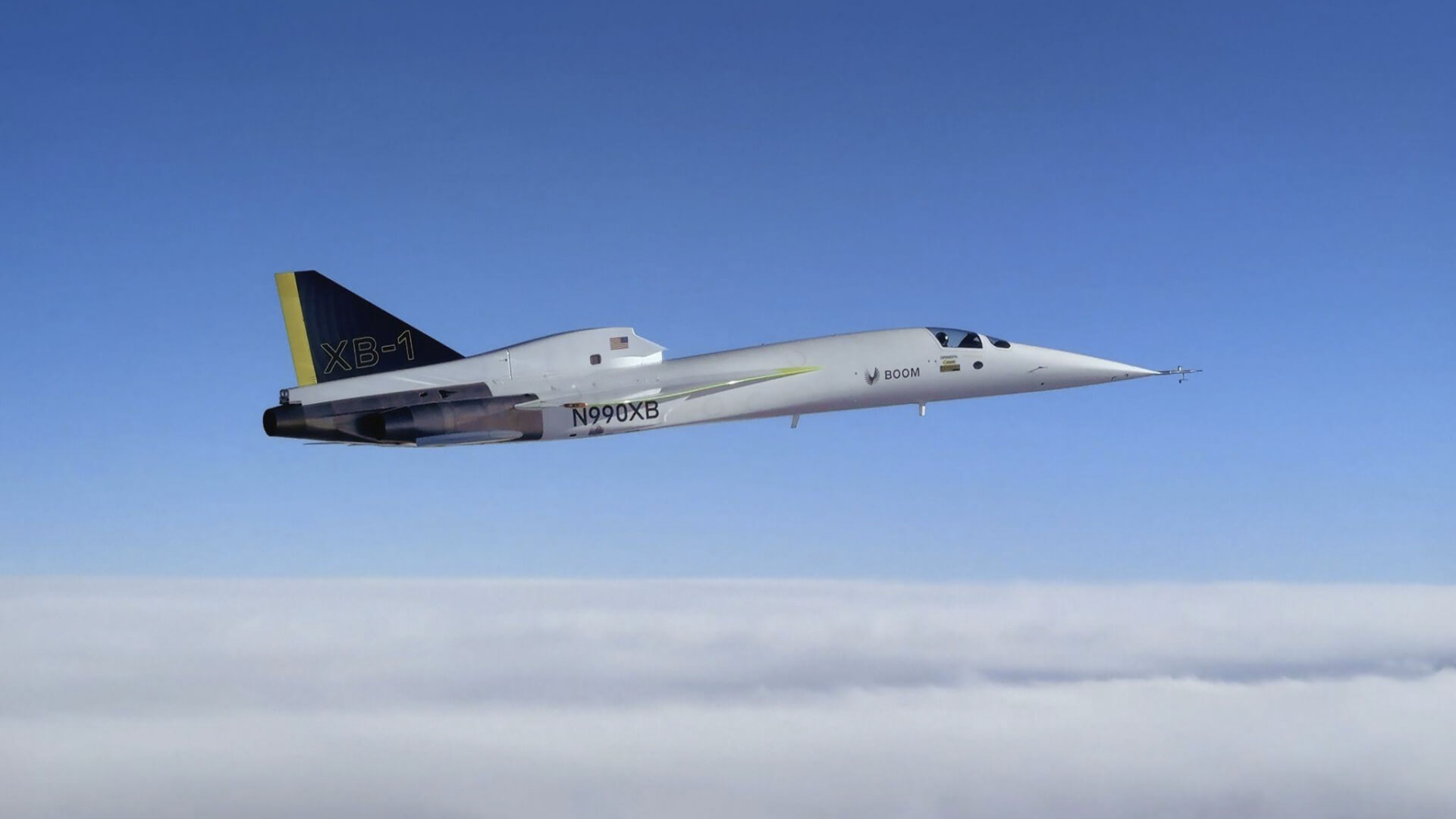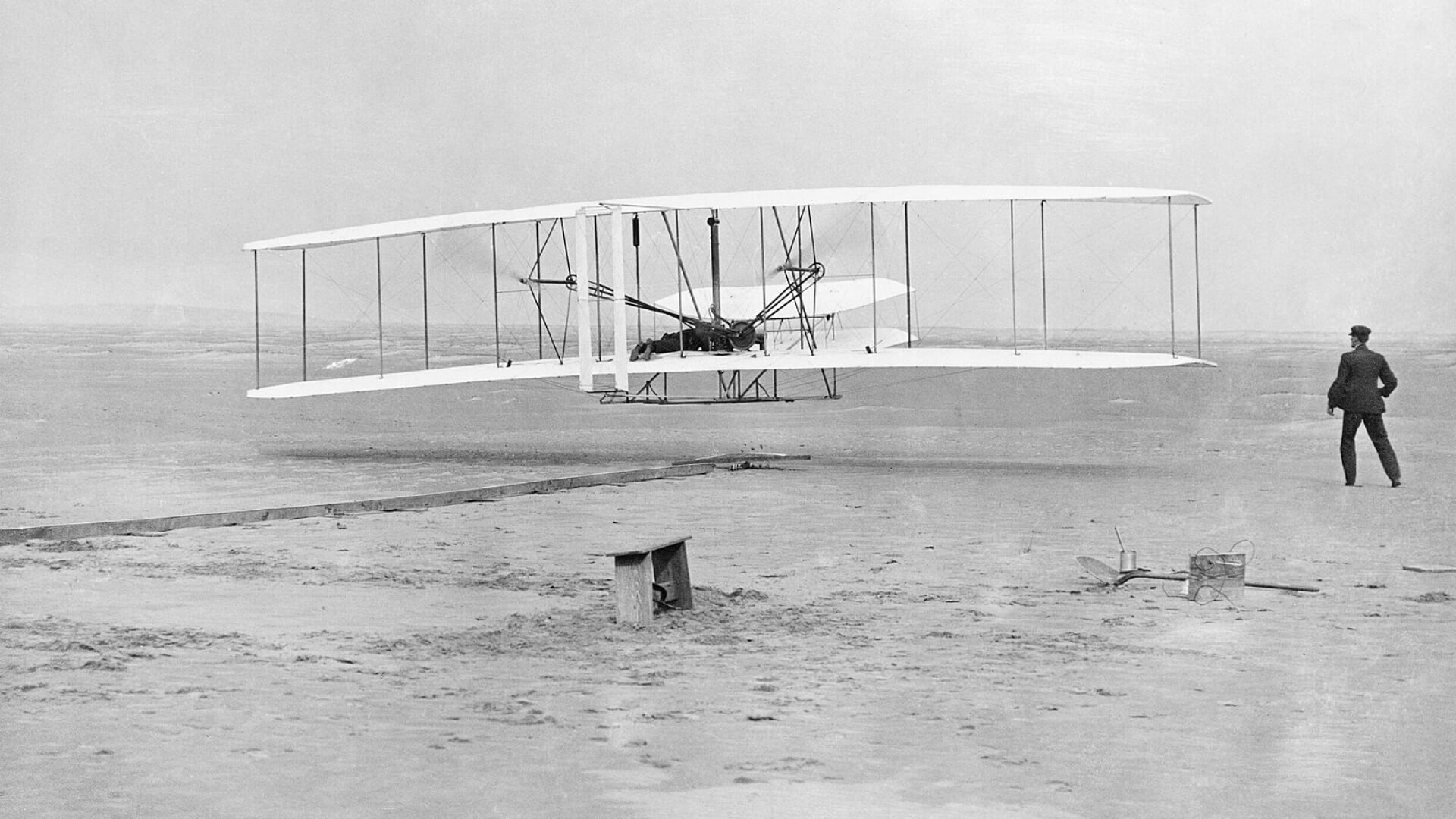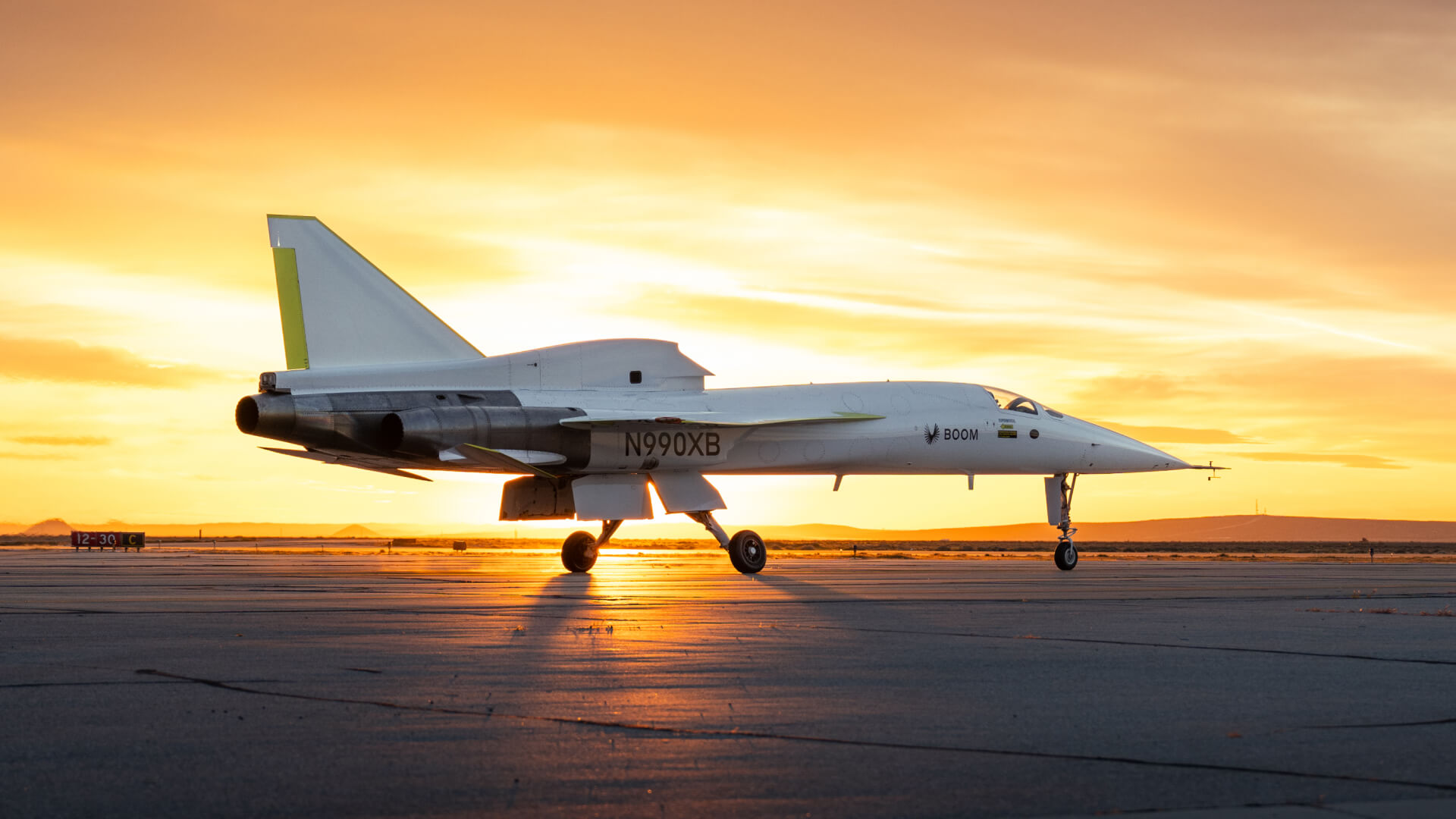XB-1, the world’s first independently developed supersonic jet, flew for the first time at the Mojave Air & Space Port in Mojave, California on March 22, 2024. XB-1 was flown by Boom Chief Test Pilot Bill “Doc” Shoemaker, and Test Pilot Tristan “Geppetto” Brandenburg flew the T-38 chase aircraft which monitored XB-1 in the air. The inaugural flight marks a major milestone toward the return of supersonic travel.
The XB-1 program provides the foundation for the design and development of Overture, Boom’s supersonic airliner, while establishing a safety-first culture in engineering and manufacturing. Like Overture, XB-1 leverages state-of-the-art technologies to enable efficient supersonic flight including carbon fiber composites, advanced avionics, digitally-optimized aerodynamics, and an advanced supersonic propulsion system.
Leading up to this day and in preparation for first flight, XB-1 completed four high-speed taxi tests, reaching speeds of 140 knots.
Click through the gallery to view the full day through images, including getting up before the sun does, ending with a successful landing, and of course, celebrating post flight.
XB-1 Takes Flight
The XB-1 team arrives at the Mojave Air & Space Port on March 22, 2024 for the 5:30 flight brief and begins to prep the aircraft for flight at 5:45AM.
At 6:00AM, the team prepares to tow XB-1 out of the hangar for pilot ingress on the ramp.
XB-1 exits the hangar, getting towed to the ramp.
Chief Test Pilot Bill “Doc” Shoemaker climbs into the cockpit at 6:15AM.
Chief Test Pilot Bill “Doc” Shoemaker performs initial cockpit checks prior to engine start.
The XB-1 team configures the aircraft for engine start at 6:30AM.
The chase plane prepares to start engines to taxi out with XB-1. Boom Pilot Tristan “Geppetto” Brandenburg enters the T-38 chase plane cockpit. Chase planes accompany new aircraft on their maiden flights to observe how the test plane is handling and to verify altitude, airspeed, and airworthiness during flight.
XB-1 starts all three engines and completes final checks before taxiing.
XB-1 Crew Chief Kurt Alger performs final checks prior to XB-1 taking the runway.
The T-38 chase plane prepares to take off ahead of XB-1 to check the air quality before XB-1 starts its takeoff roll.
XB-1 taxis onto the runway and performs final engine run ups before takeoff at 7:00AM.
After checking the air quality, the T-38 prepares to do an airborne pickup for XB-1’s takeoff.
XB-1 is cleared for takeoff by the control room.
Bill “Doc” Shoemaker pushes all three engines up into afterburner and starts the takeoff roll quickly reaching 160 knots.
XB-1 takes off from the Mojave Air & Space Port at approximately 7:28AM.
Back in the control room, the XB-1 team closely monitors the aircraft and performs an initial assessment of the aircraft’s handling qualities, including airspeed checks with the T-38 chase aircraft and the aircraft’s stability in the landing attitude (at a high angle of attack).
While in the air, XB-1 performs initial handling qualities checks and climbs to an altitude of 7,120 feet while accelerating to speeds as high as 238 knots (273 mph). It is industry standard for the landing gear to remain in the down position during first flight.
XB-1 successfully lands approximately 12 minutes after takeoff.
The ground team guides XB-1 and the T-38 back to their parking spots on the ramp.
Bill “Doc” Shoemaker shakes hands with Crew Chief Kurt Alger after exiting XB-1.
The XB-1 team on the ground carries “Doc”, celebrating XB-1’s successful first flight.
Two decades after Concorde’s retirement, the first flight of XB-1 marks the return of a civil supersonic aircraft to the skies and paves the way for the revival of mainstream supersonic travel onboard Overture, Boom’s sustainable supersonic airliner.
“Today, XB-1 took flight in the same hallowed airspace where the Bell X-1 first broke the sound barrier in 1947. I’ve been looking forward to this flight since founding Boom in 2014, and it marks the most significant milestone yet on our path to bring supersonic travel to passengers worldwide.” – Blake Scholl, founder and CEO of Boom Supersonic







